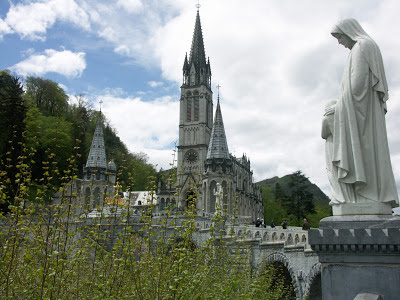 |
| From Age to Age, the Same |
A Mighty Fortress is Our God is a Fredrick H. Hedge (1805-1890) translation of the famous hymn by the Protestant Reformer, Martin Luther (1483-1546). Luther wrote both the words and melody (Ein Feste Burg) to this paraphrase of Psalm 46 sometime between 1527 and 1529. It has been translated into almost every known language. Among the 70 or so English versions, Hedge's 1852 translation is the most widely know. In the Liturgy of the Hours, A Mighty Fortress is Our God is used in the Common of One Martyr, and the Common of Several Martyrs.
Tune: Ein Feste Burg
A MIGHTY FORTRESS IS OUR GOD translated by Frederic Hedge, 1853 (PUBLIC DOMAIN)
1. A mighty fortress is our God, a bulwark never failing;
Our helper He, amid the flood of mortal ills prevailing:
For still our ancient foe doth seek to work us woe;
His craft and power are great, and, armed with cruel hate,
On earth is not his equal.
2. Did we in our own strength confide, our striving would be losing;
Were not the right Man on our side, the Man of God’s own choosing:
Dost ask who that may be? Christ Jesus, it is He;
Lord Sabaoth, His Name, from age to age the same,
And He must win the battle.
3. And though this world, with devils filled, should threaten to undo us,
We will not fear, for God hath willed His truth to triumph through us:
The Prince of Darkness grim, we tremble not for him;
His rage we can endure, for lo, his doom is sure,
One little word shall fell him.
4. That word above all earthly powers, no thanks to them, abideth;
The Spirit and the gifts are ours through Him Who with us sideth:
Let goods and kindred go, this mortal life also;
The body they may kill: God’s truth abideth still,
His kingdom is forever.























